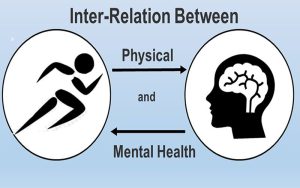
The ketogenic diet has gained significant attention as an alternative treatment for epilepsy, particularly when medication fails to provide satisfactory results. This article aims to delve into the specifics of how the ketogenic diet works in managing epilepsy and its potential benefits.
Understanding Epilepsy
Epilepsy is a neurological disorder characterized by recurrent seizures. These seizures are caused by abnormal electrical activity in the brain, leading to temporary disruptions in motor control, sensory perception, or consciousness. Traditional treatment for epilepsy often involves prescription medication, but it may not be effective for everyone.
The Science Behind Ketogenic Diet
The ketogenic diet is a high-fat, low-carbohydrate diet that works by inducing a metabolic state called ketosis. When the body is deprived of glucose from carbohydrates, it starts breaking down fats into ketones—a more efficient energy source than glucose. The switch to ketones as the primary energy source is believed to provide anti-convulsant effects, reducing the frequency and severity of seizures.
Furthermore, the ketogenic diet has shown neuroprotective properties by enhancing the production of adenosine—a vital molecule known for its anticonvulsant effects. Adenosine acts as a natural calming agent in the brain, regulating excessive electrical activity that triggers seizures.
Efficacy of Ketogenic Diet in Epilepsy
Several studies have provided evidence of the effectiveness of the ketogenic diet in managing epilepsy, especially in children. Research conducted by Johns Hopkins Medical Center found that nearly 50% of children who followed the diet experienced a significant reduction in seizure frequency, while approximately 15% achieved complete seizure control.
While the majority of research has focused on children, adults with epilepsy have also reported positive results with the ketogenic diet. However, it is important to note that the diet’s effectiveness may vary depending on individual factors, such as seizure types, underlying causes of epilepsy, and overall health.
Implementing the Ketogenic Diet
Before considering the ketogenic diet as a treatment option, it is crucial to consult with a healthcare professional, preferably a registered dietitian or a neurologist specializing in epilepsy. They can assess the suitability of the diet for an individual’s specific needs and provide guidance throughout the process.
The ketogenic diet typically consists of approximately 70-90% calories from fats, 5-20% from proteins, and 5-10% from carbohydrates. This macronutrient composition aims to initiate and maintain a state of ketosis. The diet primarily includes healthy fats (e.g., avocados, olive oil, nuts), moderate protein sources (e.g., lean meats, fish), and minimal carbohydrates (e.g., leafy greens, low-carb vegetables).
Monitoring and Adjusting
Regular monitoring is essential while following the ketogenic diet for epilepsy. Periodic blood tests may be conducted to evaluate ketone levels, cholesterol, and other metabolic markers. Additionally, adjusting the diet to maintain an appropriate balance of nutrients is crucial.
It is worth mentioning that the ketogenic diet might lead to certain side effects, commonly known as the “keto flu.” These usually occur during the initial transition phase and can include fatigue, dizziness, nausea, and irritability. However, these symptoms tend to subside as the body adapts to ketosis.
Conclusion
The ketogenic diet has proven to be a valuable adjunct therapy for epilepsy management, demonstrating its effectiveness in reducing seizure frequency and severity. While the diet requires careful planning and monitoring, it presents a potential alternative for individuals seeking additional options for managing their epilepsy. Anyone considering the ketogenic diet should consult with a healthcare professional to determine its suitability and ensure proper guidance throughout the process.

